Abstract
Lymph node cells from guinea-pigs contact sensitive to 1-thiocyamo-2,4-dinitrobenzene have been fractionated by affinity chromatography over modified polyacrylamide beads. Cells mediating lymphokine release in response to active sensitizer were depleted only by chromatography over dinitrophyenyl (DNP) containing substrates and could be specifically eluted with DNP-glycine. DNP rosette-forming cells (RFC) were equally well depleted by chromatography using either DNP or trinitrophenyl containing materials but could not be eluted from the columns by DNP-glycine. While the antigen receptors of cells mediating the release of macrophage agglutination factor in response to DNP-containing antigens and of DNP-RFC were found to be hapten-specific, their specificity was shown to differ using chromatography over trinitrophenyl containing polyacrylamide.
Full text
PDF
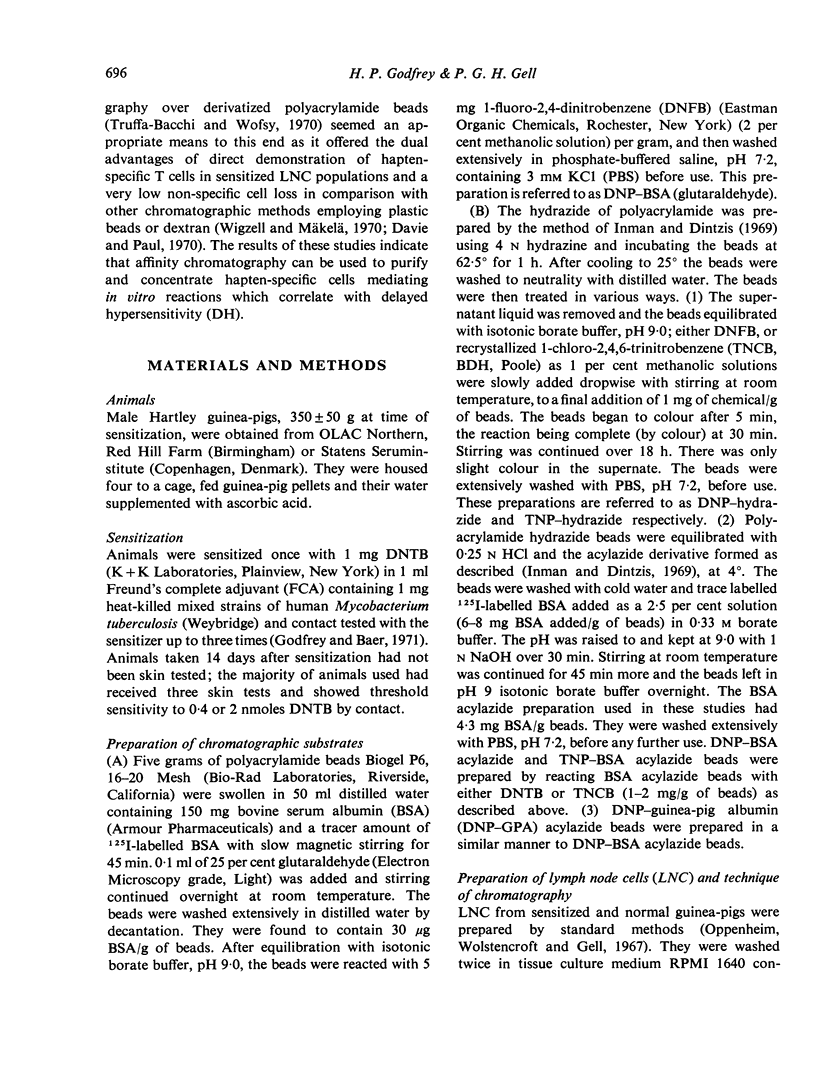

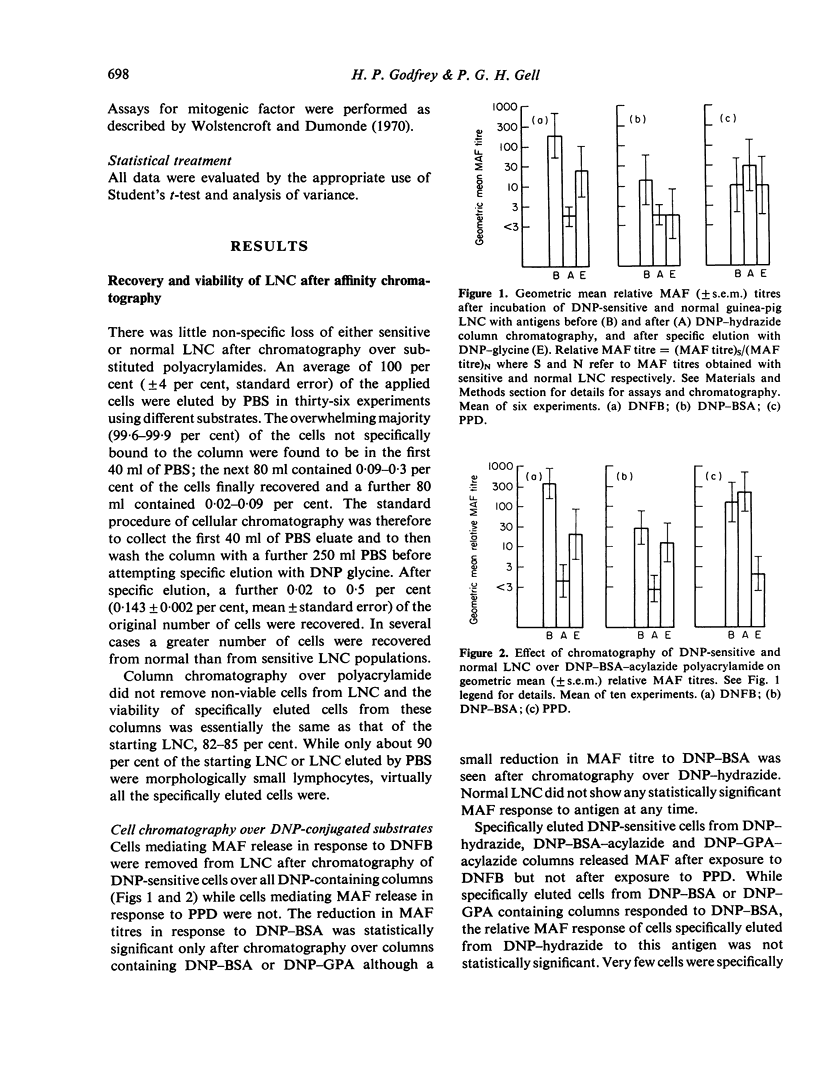
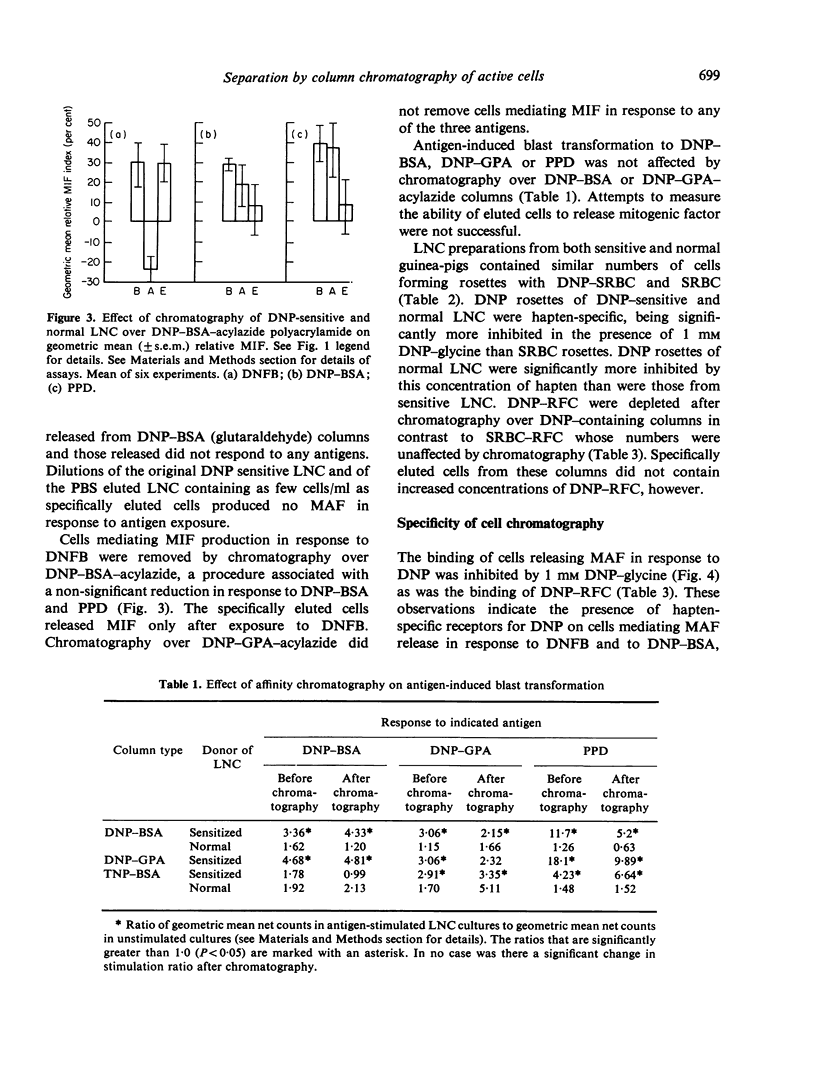
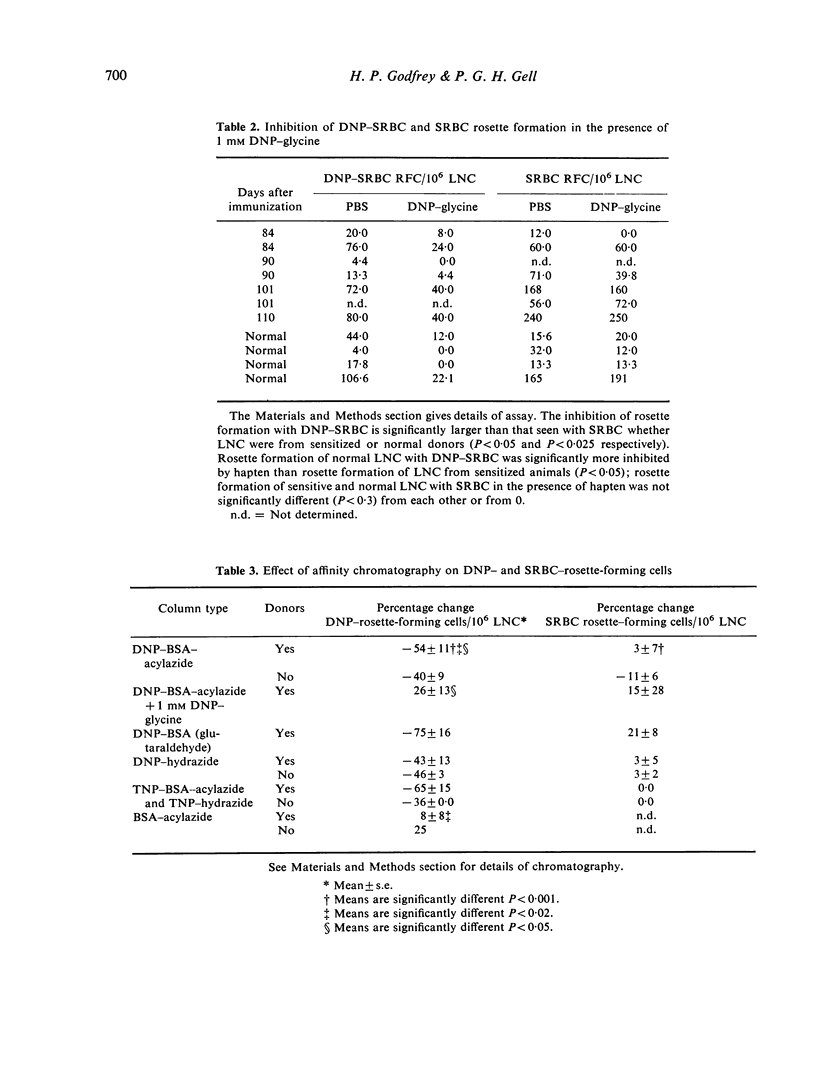

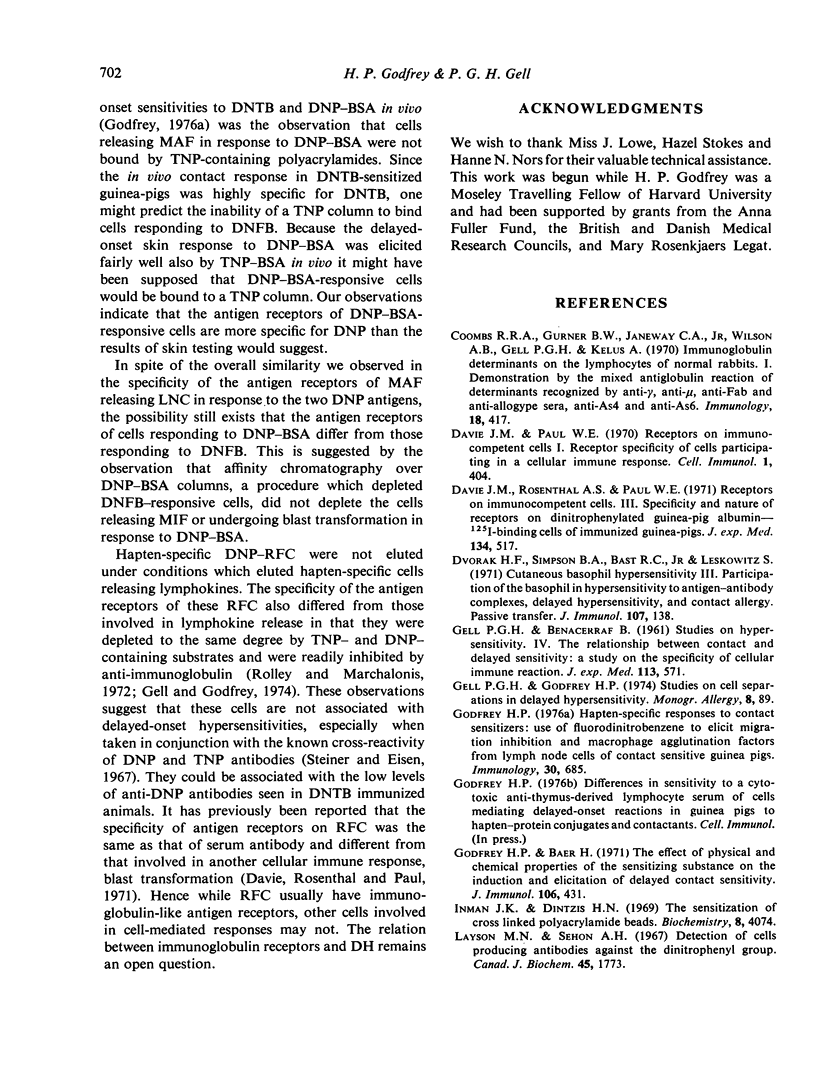
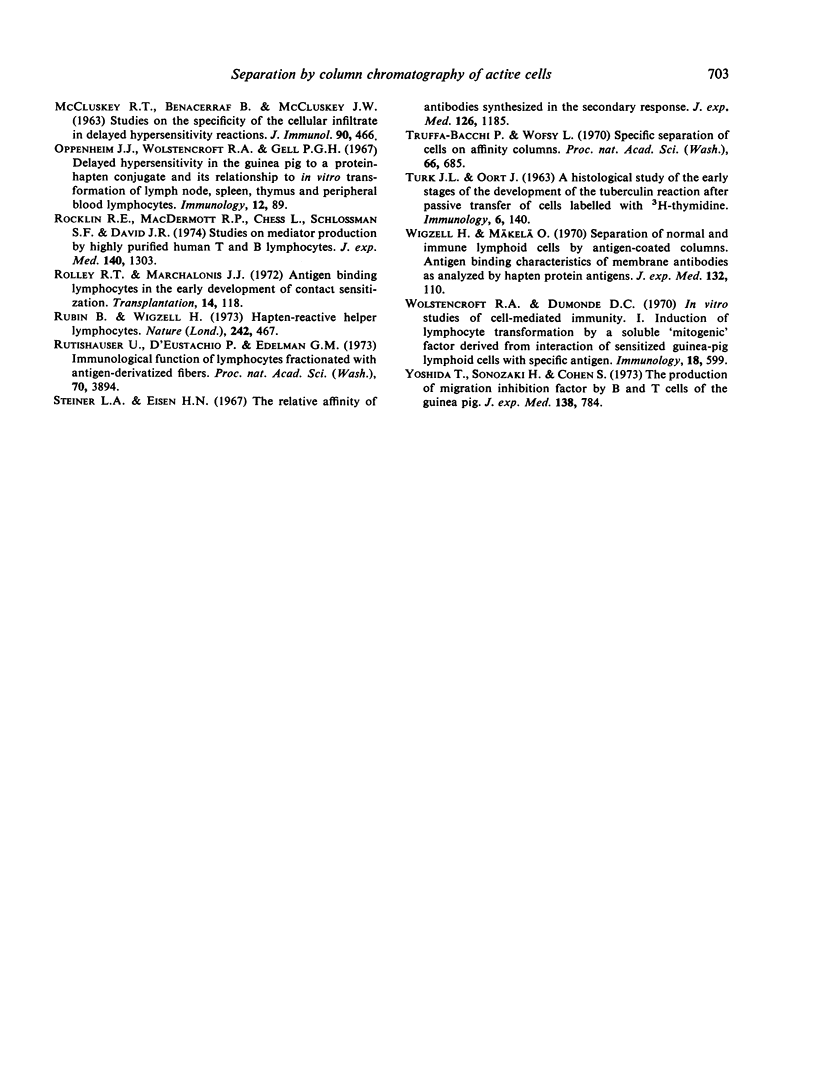
Selected References
These references are in PubMed. This may not be the complete list of references from this article.
- Coombs R. R., Gurner B. W., Janeway C. A., Jr, Wilson A. B., Gell P. G., Kelus A. S. Immunoglobulin determinants on the lymphocytes of normal rabbits. I. Demonstration by the mixed antiglobulin reaction of determinants recognized by anti-gamma, anti-mu, anti-Fab and anti-allotype sera, anti-As4 and anti-As6. Immunology. 1970 Mar;18(3):417–429. [PMC free article] [PubMed] [Google Scholar]
- Davie J. M., Paul W. E. Receptors on immunocompetent cells. I. Receptor specificity of cells participating in a cellular immune response. Cell Immunol. 1970 Oct;1(4):404–418. doi: 10.1016/0008-8749(70)90017-1. [DOI] [PubMed] [Google Scholar]
- Davie J. M., Rosenthal A. S., Paul W. E. Receptors on immunocompetent cells. 3. Specificity and nature of receptors on dinitrophenylated guinea pig albumin- 125 I-binding cells of immunized guinea pigs. J Exp Med. 1971 Aug 1;134(2):517–531. doi: 10.1084/jem.134.2.517. [DOI] [PMC free article] [PubMed] [Google Scholar]
- Dvorak H. F., Simpson B. A., Bast R. C., Jr, Leskowitz S. Cutaneous basophil hypersensitivity. 3. Participation of the basophil in hypersensitivity to antigen-antibody complexes, delayed hypersensitivity and contact allergy. Passive transfer. J Immunol. 1971 Jul;107(1):138–148. [PubMed] [Google Scholar]
- GELL P. G., BENACERRAF B. Studies on hypersensitivity. IV. The relationship between contact and delayed sensitivity: a study of the specificity of cellular immune reactions. J Exp Med. 1961 Mar 1;113:571–585. doi: 10.1084/jem.113.3.571. [DOI] [PMC free article] [PubMed] [Google Scholar]
- Godfrey H. P., Baer H. The effect of physical and chemical properties of the sensitizing substance on the induction and elicitation of delayed contact sensitivity. J Immunol. 1971 Feb;106(2):431–441. [PubMed] [Google Scholar]
- Godfrey H. P. Hapten-specific responses to contact sensitizers. Use of fluorodinitrobenzene to elicit migration inhibition and macrophage agglutination factors from lymph node cells of contact-sensitive guinea-pigs. Immunology. 1976 May;30(5):685–694. [PMC free article] [PubMed] [Google Scholar]
- Inman J. K., Dintzis H. M. The derivatization of cross-linked polyacrylamide beads. Controlled introduction of functional groups for the preparation of special-purpose, biochemical adsorbents. Biochemistry. 1969 Oct;8(10):4074–4082. doi: 10.1021/bi00838a026. [DOI] [PubMed] [Google Scholar]
- Layson M. N., Sehon A. H. Detection of cells producing antibodies against the dinitrophenyl group. Can J Biochem. 1967 Nov;45(11):1773–1776. doi: 10.1139/o67-208. [DOI] [PubMed] [Google Scholar]
- MCCLUSKEY R. T., BENACERRAF B., MCCLUSKEY J. W. STUDIES ON THE SPECIFICITY OF THE CELLULAR INFILTRATE IN DELAYED HYPERSENSITIVITY REACTIONS. J Immunol. 1963 Mar;90:466–477. [PubMed] [Google Scholar]
- Rocklin R. E., MacDermott R. P., Chess L., Schlossman S. F., David J. R. Studies on mediator production by highly purified human T and B lymphocytes. J Exp Med. 1974 Nov 1;140(5):1303–1316. doi: 10.1084/jem.140.5.1303. [DOI] [PMC free article] [PubMed] [Google Scholar]
- Rolley R. T., Marchalonis J. J. Antigen-binding lymphocytes in the early development of contact sensitization. Transplantation. 1972 Jul;14(1):118–124. doi: 10.1097/00007890-197207000-00017. [DOI] [PubMed] [Google Scholar]
- Rubin B., Wigzell H. Hapten-reactive helper lymphocytes. Nature. 1973 Apr 13;242(5398):467–469. doi: 10.1038/242467a0. [DOI] [PubMed] [Google Scholar]
- Rutishauser U., D'Eustachio P., Edelman G. M. Immunological functions of lymphocytes fractionated with antigen-derivatized fibers. Proc Natl Acad Sci U S A. 1973 Dec;70(12):3894–3898. doi: 10.1073/pnas.70.12.3894. [DOI] [PMC free article] [PubMed] [Google Scholar]
- Steiner L. A., Eisen H. N. The relative affinity of antibodies synthesized in the secondary response. J Exp Med. 1967 Dec 1;126(6):1185–1205. doi: 10.1084/jem.126.6.1185. [DOI] [PMC free article] [PubMed] [Google Scholar]
- Truffa-Bachi P., Wofsy L. Specific separation of cells on affinity columns. Proc Natl Acad Sci U S A. 1970 Jul;66(3):685–692. doi: 10.1073/pnas.66.3.685. [DOI] [PMC free article] [PubMed] [Google Scholar]
- Wigzell H., Mäkelä O. Separation of normal and immune lymphoid cells by antigen-coated coated columns. Antigen-binding characteristics of membrane antibodies as analyzed by hapten-protein antigens. J Exp Med. 1970 Jul 1;132(1):110–126. doi: 10.1084/jem.132.1.110. [DOI] [PMC free article] [PubMed] [Google Scholar]
- Wolstencroft R. A., Dumonde D. C. In vitro studies of cell-mediated immunity. I. Induction of lymphocyte transformation by a soluble "mitogenic" factor derived from interaction of sensitized guinea-pig lymphoid cells with specific antigen. Immunology. 1970 Apr;18(4):599–610. [PMC free article] [PubMed] [Google Scholar]
- Yoshida T., Sonozaki H., Cohen S. The production of migration inhibition factor by B and T cells of the guinea pig. J Exp Med. 1973 Oct 1;138(4):784–797. doi: 10.1084/jem.138.4.784. [DOI] [PMC free article] [PubMed] [Google Scholar]


